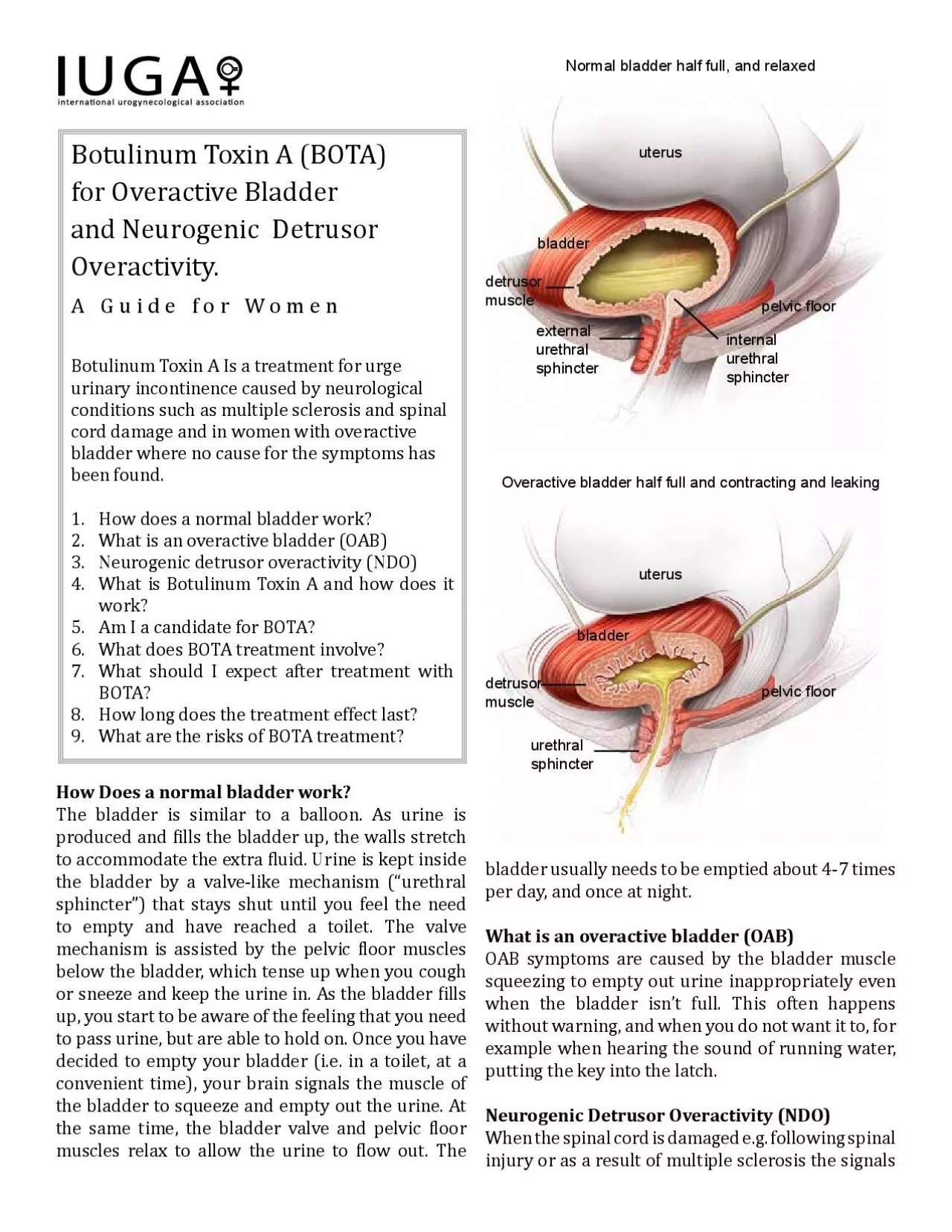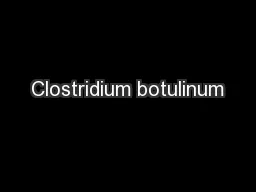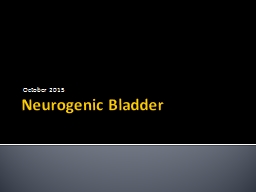PDF-Botulinum Toxin A BOTA for Overactive Bladder and Neurogenic Detruso
Author : abigail | Published Date : 2021-09-01
How Does a normal bladder workThe bladder is similar to a balloon As urine is produced and fills the bladder up the walls stretch to accommodate the extra fluid
Presentation Embed Code
Download Presentation
Download Presentation The PPT/PDF document "Botulinum Toxin A BOTA for Overactive Bl..." is the property of its rightful owner. Permission is granted to download and print the materials on this website for personal, non-commercial use only, and to display it on your personal computer provided you do not modify the materials and that you retain all copyright notices contained in the materials. By downloading content from our website, you accept the terms of this agreement.
Botulinum Toxin A BOTA for Overactive Bladder and Neurogenic Detruso: Transcript
Download Rules Of Document
"Botulinum Toxin A BOTA for Overactive Bladder and Neurogenic Detruso"The content belongs to its owner. You may download and print it for personal use, without modification, and keep all copyright notices. By downloading, you agree to these terms.
Related Documents














